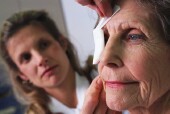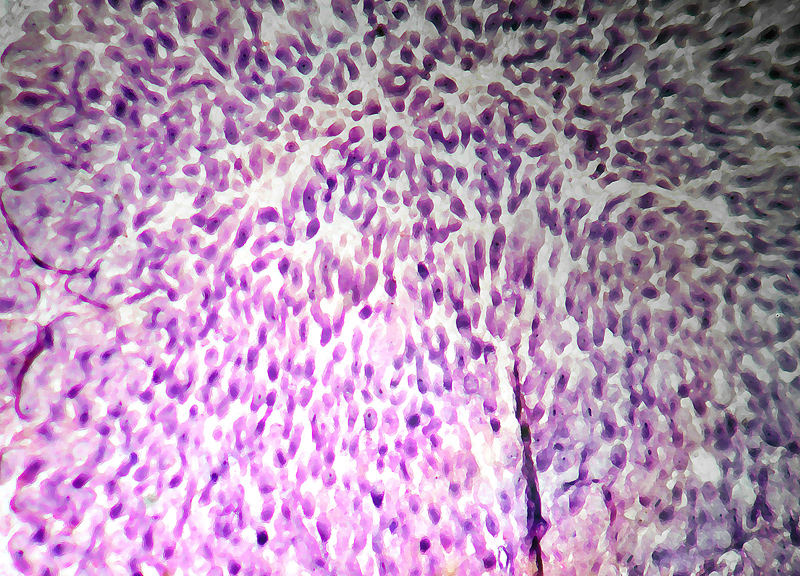
TUESDAY, Aug. 10 (HealthDay News) — Almost one in three people with diabetes has evidence of the eye disease called diabetic retinopathy, according to new research.
What’s more, over 4 percent of people with diabetes have diabetic retinopathy that’s so advanced it’s threatening their vision, reports the study published in the Aug. 11 issue of the Journal of the American Medical Association.
“This was a national population-based study and we found that among Americans with diabetes who were age 40 and older, that 28.5 percent — or 4.2 million people — have diabetic retinopathy. And, 4.4 percent had vision-threatening diabetic retinopathy,” said the study’s lead author, Dr. Xinzhi Zhang, an epidemiologist with the U.S. Centers for Disease Control and Prevention in Atlanta.
The news wasn’t all bad, however. The findings suggest that good control of blood sugar, blood pressure and cholesterol can go a long way toward preventing or slowing diabetic eye disease. And treatment with laser surgery may be helpful for those with more advanced retinopathy.
“If you have diabetes, take good care of your diabetes and get your eyes examined regularly,” advised Zhang. “If you find problems early and get treatment, you can delay or prevent the loss of vision.”
Diabetic retinopathy causes changes in the blood vessels in the eyes. In some cases, new and abnormal blood vessels grow, and in other cases, existing blood vessels swell and leak, according to the U.S. National Eye Institute. Diabetic retinopathy remains the number one cause of vision loss in people aged 20 to 74 in the United States, according to background information in the study.
The last study that looked at national prevalence of diabetic retinopathy was done between 1988 and 1994. To get an updated estimate of what the prevalence of the eye disease might be now, Zhang and his colleagues reviewed data from the National Health and Nutrition Examination Survey from 2005 to 2008, which included nearly 7,000 people over age 40.
Of those people, 1,006 reported that they had been diagnosed with diabetes, or they had a hemoglobin A1C reading above 6.5 percent. Hemoglobin A1C is a measure of long-term blood sugar control, and according to the American Diabetes Association, someone who has a level of 6.5 percent or higher has diabetes. The study did not differentiate between type 1 and type 2 diabetes.
In addition to finding that nearly one in three people with diabetes has some form of diabetic retinopathy, the researchers also found that slightly more men than women have the disease (about 32 percent versus 26 percent), and blacks and Mexican Americans have a higher rate of the disorder than whites (about 39, 34 and 26 percent, respectively).
Other risk factors for diabetic retinopathy found in the study included a higher A1C level (which indicates poor blood sugar control), higher systolic blood pressure, a longer duration of diabetes and insulin use.
Zhang said that many of these risk factors, such as a high A1C or the need for insulin (in type 2 diabetics) might indicate more severe diabetes, which is more likely to result in diabetic retinopathy.
“I was surprised to see that there’s still such a high prevalence of diabetic retinopathy,” said Dr. Richard Bergenstal, president of medicine and science for the American Diabetes Association. “We’ve made a lot of progress in treating diabetes and the hope is always that the complications are going away, but we still have a lot of people who aren’t quite to goal in terms of blood sugar management.”
Bergenstal said that everyone with type 2 diabetes should have a dilated eye exam soon after they’re diagnosed with diabetes, because they’ve likely had diabetes for a while without knowing it. After the initial exam, he said, a dilated eye exam is needed every year thereafter. People just diagnosed with type 1 diabetes may be able to wait a few years before having their first dilated eye exam, but then should have one every year after as well.
Bergenstal said that to help prevent retinopathy, people with either type of diabetes need to maintain good blood sugar levels, keep their blood pressure controlled, and lower their cholesterol with medications, if necessary.
More information
To learn more about diabetic retinopathy, visit the U.S. National Eye Institute.

